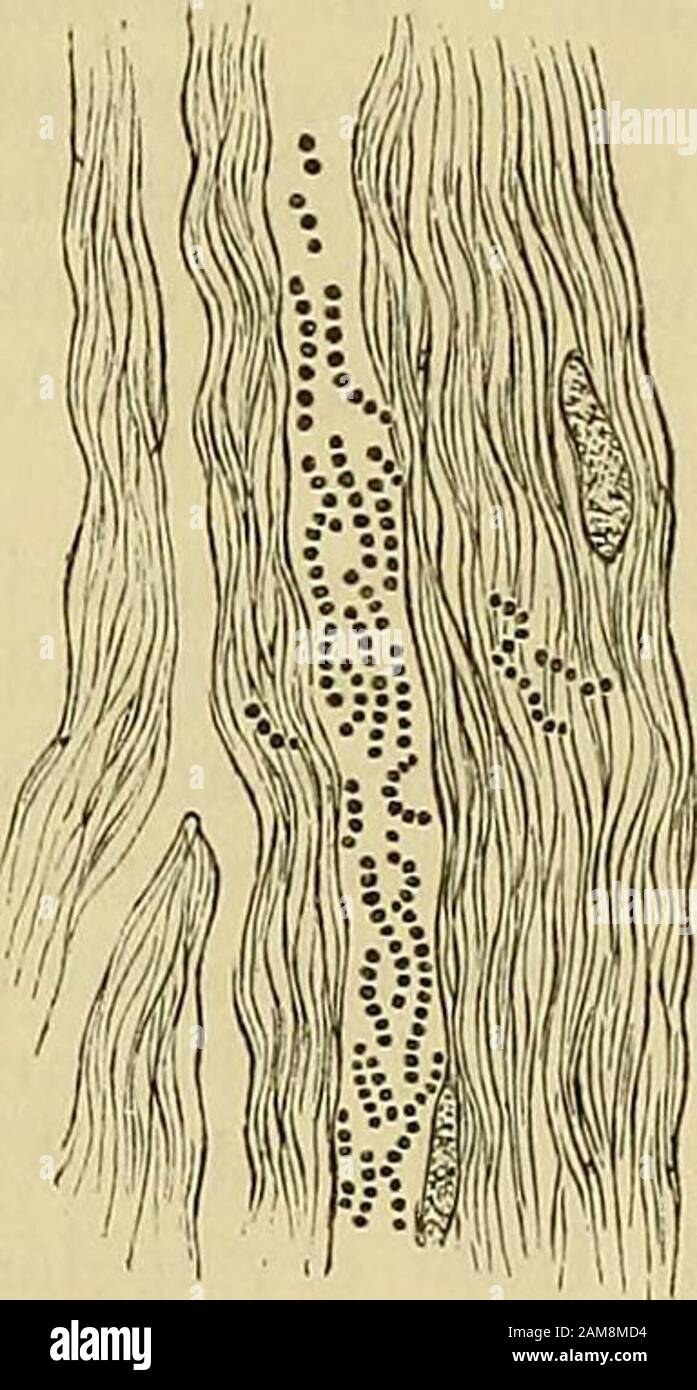A system of surgery . th such cultures Fehleisen causedtypical erysipelas. The streptococcus of erysipelas has been foundin the fluid of the bulla? (Orth.), in the blood in fatal cases (seeFig. 26), in the pericardial fluid, in the muscular walls of the heart,in the lungs, liver, spleen, and mesenteric glands (Pfuhl). Inordinarycases it is probable that the streptococcus of erysipelas does not enterthe blood (Fehleisen). Eiselsberg failed to find them in three cases.Cornil and Babes give an excellent description of the histologicalchanges in erysipelatous skin. Migratory cells infiltrate the b

Image details
Contributor:
The Reading Room / Alamy Stock PhotoImage ID:
2AM8MD4File size:
7.2 MB (348.7 KB Compressed download)Releases:
Model - no | Property - noDo I need a release?Dimensions:
1158 x 2159 px | 19.6 x 36.6 cm | 7.7 x 14.4 inches | 150dpiMore information:
This image is a public domain image, which means either that copyright has expired in the image or the copyright holder has waived their copyright. Alamy charges you a fee for access to the high resolution copy of the image.
This image could have imperfections as it’s either historical or reportage.
A system of surgery . th such cultures Fehleisen causedtypical erysipelas. The streptococcus of erysipelas has been foundin the fluid of the bulla? (Orth.), in the blood in fatal cases (seeFig. 26), in the pericardial fluid, in the muscular walls of the heart, in the lungs, liver, spleen, and mesenteric glands (Pfuhl). Inordinarycases it is probable that the streptococcus of erysipelas does not enterthe blood (Fehleisen). Eiselsberg failed to find them in three cases.Cornil and Babes give an excellent description of the histologicalchanges in erysipelatous skin. Migratory cells infiltrate the bundlesof connective tissues, especially around the blood-vessels and lym-phatics, and around the fat lobules. The migratory cells are moreabundant in the dermis than in the papilla?. The fixed cells areswollen and undergoing division. There is a sero-fibrinous exudationin the dermis and subcutaneous tissues. The endothelium of thelymph spaces is swollen, and many subcutaneous lymphatics are filledwith migratory cells.. Fig. 27. — Erysipelas :Streptococci in lymphspaces of skin. (AfterCornil and Babes). CAUSES. 165 Causes.—The general predisposing causes of erysipelas may bein the environments, as overcrowding, bad drainage ; or in thehabits of the patient, especially intemperance. Starvation, debilitat-ing diseases, diabetes, Brights disease, gout, and malignant diseaseall predispose to erysipelas, as do also previous attacks. Infants andthe i^ged are probably predisposed. The local predisposing causes are dependent upon the position ofthe injury in places which facilitate sepsis, such as the scalp, scrotum, female organs of generation, the mouth and anus. Thedifferent varieties of erysipelas are also more liable to complicatewounds which are lacerated and contused, simply because they aremore likely to be infected, and are harder to disinfect. The exact relationship of the streptococcus of erysipelas to cellulo-cutaneous erysipelas is still the subject of controversy. There